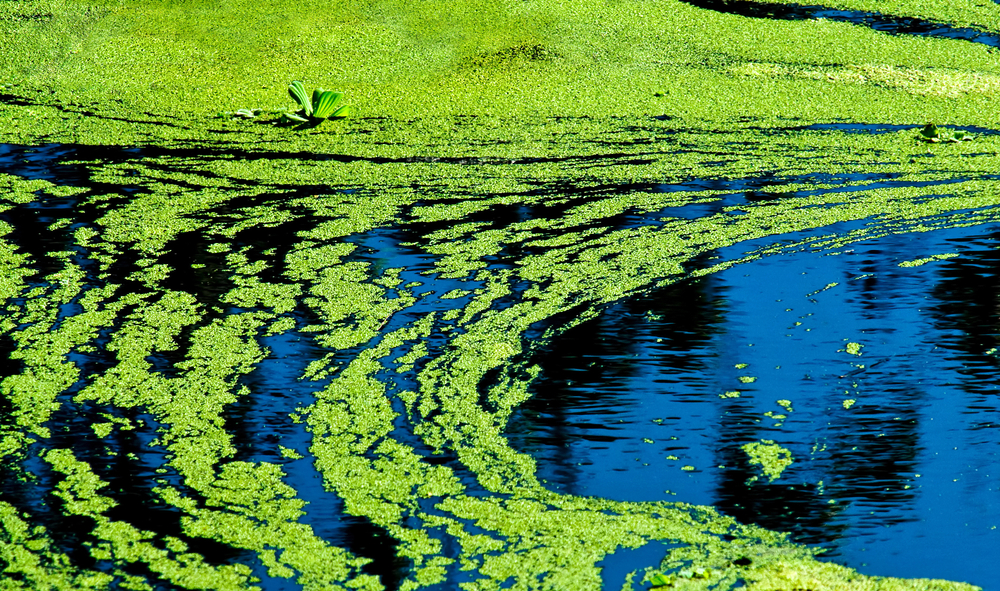Blue-Green Algae is commonly found in the lakes and ponds in the Madison area during the summer. Blue-green algae, also known as cyanobacteria, that are part of our lakes here in Wisconsin becomes dangerous during the summer when increased sunlight can cause the cyanobacteria to grow and create algae blooms. These blooms are most prevalent from May to September and produce toxins that can make people and animals very sick after they swallow or have contact with the water. Dogs can even be exposed by licking their coat after swimming in contaminated water.
How do I know if water is contaminated with blue-green algae?
Conditions that favor growth of blue-green algae blooms include: warm, dry weather; stagnant or slow-moving water and increased phosphorous and nitrogen from fertilizer runoff. Always assess the water quality before letting your dog swim or drink from a lake or pond.
Ask yourself:
- Does the water have a pea soup appearance, or does it look like latex paint on the surface of the water?
- Are there any dead fish or other dead wildlife in the area?
- Is there floating scum or red/brown mats?
- Have there been any alerts issued by the local authorities regarding water quality in the area?
If you answer yes to any of the above questions, do not allow your dog to go near this water!
What are the signs of blue-green algae intoxication in my dog?
Dogs can become critically ill, possibly leading to death, within minutes or up to 12 hours after exposure. This is why you should supervise your dog around all bodies of water and do not let them near beaches that are closed due to water quality. Symptoms can include vomiting, diarrhea, drooling, panting, difficulty breathing, weakness, seizures, and extreme lethargy. If your dog develops any symptoms after exposure to a lake or pond seek help from a veterinarian immediately!
The prognosis for dogs with cyanobacteria poisoning depends on the timing of treatment and the severity of exposure. Dogs that receive prompt treatment have a better chance of recovery, dogs with severe liver or neurologic signs have a poorer prognosis.
How can I reduce the risk of my dog coming into contact with toxic algae?
- Avoid water with visible algae blooms.
- Rinse your dog with fresh water after swimming.
- Check local reports for alerts concerning the water quality in your area.
- Closely supervise your dog when near water.
Cyanobacteria toxicity can be a serious risk for dogs, especially those that love to swim or play near freshwater. By understanding the dangers posed by cyanotoxins, recognizing the symptoms of poisoning, and taking steps to avoid exposure, you can help protect your dog from this potentially deadly toxin. If you suspect your dog has ingested or been exposed to toxic algae, don’t hesitate to seek veterinary care—prompt treatment can make all the difference in your pet’s recovery.
Stay in the know with water quality updates from City of Madison & Dane County here: https://www.publichealthmdc.com/environmental-health/beaches-lakes-pools/beach-conditions/

